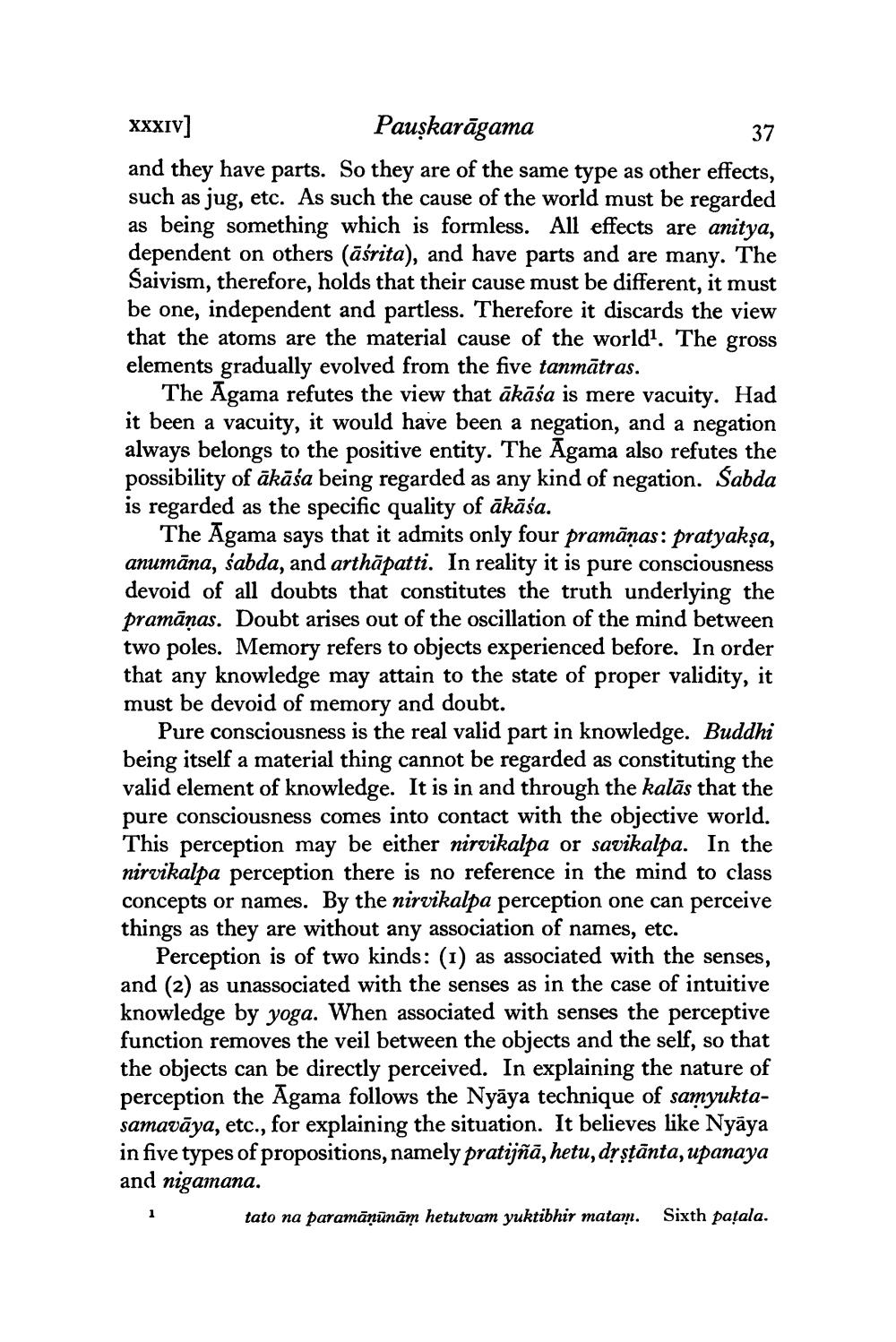________________
XXXIV] Pauskarāgama
37 and they have parts. So they are of the same type as other effects, such as jug, etc. As such the cause of the world must be regarded as being something which is formless. All effects are anitya, dependent on others (āśrita), and have parts and are many. The Saivism, therefore, holds that their cause must be different, it must be one, independent and partless. Therefore it discards the view that the atoms are the material cause of the world'. The gross elements gradually evolved from the five tanmātras.
The Agama refutes the view that ākāśa is mere vacuity. Had it been a vacuity, it would have been a negation, and a negation always belongs to the positive entity. The Agama also refutes the possibility of ākāśa being regarded as any kind of negation. Sabda is regarded as the specific quality of ākāśa.
The Agama says that it admits only four pramāṇas: pratyakşa, anumāna, sabda, and arthāpatti. In reality it is pure consciousness devoid of all doubts that constitutes the truth underlying the pramāṇas. Doubt arises out of the oscillation of the mind between two poles. Memory refers to objects experienced before. In order that any knowledge may attain to the state of proper validity, it must be devoid of memory and doubt.
Pure consciousness is the real valid part in knowledge. Buddhi being itself a material thing cannot be regarded as constituting the valid element of knowledge. It is in and through the kalās that the pure consciousness comes into contact with the objective world. This perception may be either nirvikalpa or savikalpa. In the nirvikalpa perception there is no reference in the mind to class concepts or names. By the nirvikalpa perception one can perceive things as they are without any association of names, etc.
Perception is of two kinds: (1) as associated with the senses, and (2) as unassociated with the senses as in the case of intuitive knowledge by yoga. When associated with senses the perceptive function removes the veil between the objects and the self, so that the objects can be directly perceived. In explaining the nature of perception the Agama follows the Nyāya technique of samyuktasamavāya, etc., for explaining the situation. It believes like Nyāya in five types of propositions, namely pratijñā, hetu, drstānta, upanaya and nigamana.
tato na paramāņūnām hetutvam yuktibhir matam. Sixth patala.




